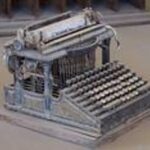Learning how to interview people and then transcribing those interviews can be a skill that doesn’t come naturally to writers. It certainly didn’t for me when I was starting out as a writer and was sent out on assignments to interview all sorts of people – from homeowners to medical specialists to the occasional minor celebrity. At first, I struggled to get the information I needed, transcribe it and turn it into a tightly written article that also maintained reader interest. As with many skills, the process became simpler over time. I learned what to expect, how to prepare and how to transcribe interviews more easily. While you’ll probably want to add or subtract tips to find what works for you as a writer, these are some of my favorite ways to make the transcription process go more smoothly:
First step: do your research and be prepared
When writing for some local publications, I was sometimes asked to fill in quickly for other writers who’d gotten sick or couldn’t complete assignments and had to wing it or do an interview with a minimum of background information. This isn’t ideal, though. If you have the time, do your homework and find out whatever you can about the person you are going to interview. This will not only make the transcription factor easier later but help you to remember key details about that person’s life. No detail is too small at this point and some odd piece of info, such as a favorite perfume or unusual hobby, could be just the “hook” you need to create focus or engage your readers. So do those internet searches, speak to friends, family and colleagues of potential interview subjects and gather whatever material you can beforehand.
Second step: transcribing interviews often goes more easily if you’ve established some rapport with the person you are going to interview
This is a key part of the research and preparation process and connects strongly to transcribing interviews as well. In my experience, a relaxed or more trusting interviewee often is willing to talk more openly than one I meet only on the day of the interview. As noted before, there were some occasions when last minute interviews arose but the ideal situations were ones when I could speak with a potential interviewee by phone or in person first. I’d also discover which people were reclusive or wary of reporters or journalists, particularly if they’d felt the media had treated them unkindly. Often, it could take time to explain the approach or focus of the article. It was worth every minute of that time and made the interview and transcription process much easier later.
Third step – don’t trust only one source of recording the interviews you’ll transcribe but have a second recording device on hand.
I’m old-fashioned when it comes to interviews. I’ve done phone interviews and used voice recorders but this isn’t my preference. Instead, I like to meet with people wherever they are likely to feel most comfortable and use a plain, small recorder to copy what they say, supplemented by a minimum of notes I write on a small notepad. I’m also careful to meet people where they likely to be at ease. For doctors, that setting may be at their medical office while other people may prefer the comfort of eating in a family style restaurant, one they visit often. Wherever you go, make sure you have extra recording devices on hand.
One of my favorite recording devices which simplifies the transcription factor is the LiveScribe Pulse Smartpen. You can see more about that here: www.associatedcontent.com/article/897691/my_experience_with_the_livescribe_pulse.html This innovative new pen actually helps you take notes and go to key points in your interviews, uploading material and complete interviews into your computer. It is much better than a traditional recorder in many ways! Maybe you’ll give it a try and see if it helps as you transcribe your interviews. But even with this along, I bring a small mini recorder and place it nearby. This brings up my next point which is….
Fourth step: make the transcription process easier by minimizing awkward moments that take up interview time.
While some people may never forget that they are being recorded or that you are taking notes, others will relax. You’ll up the odds of that if you use something like the LiveScribe Pulse Smartpen because it looks more like a pen than a voice recorder. If you’d prefer to use a traditional recorder as a supplement to any notes you take, try to place it near a plant or some less obvious place on the table and use one that has minimal noise. You don’t want it to attract too much attention. Short but detailed interviews make the work of transcribing less challenging.
Fifth step – transcription will be easier if you find abbreviations for common words. Also, consider using only the first and last initials of the names of people you are interviewing .
At the start of an interview, I make sure I’ve gotten the full names and titles of anyone I’m interviewing. I also am clear about their voices. With rare exceptions, most people have easily identifiable voices. After I’ve gotten their names, I tend to note only their initials when first transcribing interviews, the ones I plan to edit and turn into final drafts of articles.
Using abbreviations for key words that come up time and again- whether they are medical terms or major points- also helps. Abbreviations save time. I’ve never learned shorthand but I could certainly understand the advantages of doing so. As you go on interviews, you are likely to create your own type of shorthand. This could save you loads of time when you have to transcribe those interviews!
Sixth step – consider creating a rough outline of your interview and try to stick to it as much as possible to shorten transcription time later.
I have to admit that there are times when I’ve been able to do this quite successfully. When interviewing doctors about specific conditions such as infertility, I could have a general outline of what needed to be covered and ask the medical expert only for some key quotes. However, there were many other times when it was better to let interviewees ramble. Try to trust your instincts as a writer to find what works best….but remember that you’ll have to listen to every minute of extra chat to sort out the strongest points as you transcribe those interviews!
Seventh step – don’t forget the importance of intelligent, thoughtful questions to aid in the interview process and transcription of those interviews.
At the very least, cover the basics of the material. For example, if you were writing a health article, you’ d want to cover the basics of a medical condition when interviewing a medical expert as well as his or her personal experience and views on the subject. If you talk to a parent who has lost a child, you’ll focus on other issues but thinking through all aspects of the topic and having plenty of relevant questions is a must. If you’ve outlined your material ahead of time and have key questions, transcribing the interview could be a snap.
Eighth step – remember who is speaking and make sure his or her voice comes through during transcription – not your voice. Always quote people accurately.
This was a mistake I made early on. When someone used slang or had a particular dialect, especially if that person was known for it, I had to fight the urge to take out those very personal styles and leave in only snippets of conversation. You’ll need to suit your style to your employer’s wishes, of course, but if you can leave in the narrator’s personality and special lingo, it often adds flavor to a transcribed interview if you do so. If you’re making a formal transcription, however, you may be asked to eliminate such personal touches. Also, do not put words in the mouth of anyone you interview but quote them accurately. You have the tapes and notes to ensure accuracy. If someone wonders if they “really” said something, you don’t want to have to be proven wrong. If you think you’ll be humiliating someone you are profiling (and that isn’t your intent) consider verifying quotes with those you’ve interviewed, especially if accuracy is in question.
Ninth step – edit carefully as you transcribe interviews.
During actual speech, many people tend to go on and on. That is fine during conversation but you’ll want to eliminate repetitive and extra words to get to the core of what an interviewee said. Tricky? It can be because you want to maintain the speaker’s tone, emphasis and meaning. Even so, many paragraphs of transcribed interviews can often be edited to only one or two choice sentences.
Tenth step- when in doubt, don’t be afraid to double check the facts. Then go back and triple check them.
Once you finish transcribing an interview, don’t just assume that what you were told was correct. Find data or research studies that verify what you were told. Remember, if the person you interview makes a mistake or tells you how to spell someone’s name – and you go with that information – you’ll be responsible for any errors and both you and the so-called expert may come across as unprofessional.
Readers won’t automatically know the source of the mistakes. So double and triple check key facts before you use transcriptions in articles that are meant to be published. Don’t let the final form reflect any inaccuracies or half truths that you could have cleared up earlier. I often found that doctors and others were grateful to have the opportunity to go back and verify information, sometimes surprising themselves by learning that their own assumptions needed to be changed in light of newer research.
You’ll want to tread carefully when questioning what experts or celebrities say, of course. Their pride and reputation is often on the line. But if you unearth some key fact that wasn’t covered in the interview, consider going back and discussing it with them, being sure to be tactful and polite. That way, you’ll be more likely to get more jobs and have additional opportunities to speak with all sorts of people, record their words and transcribe the interviews for publication.







